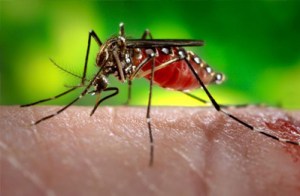 The unfolding Zika epidemic demonstrates how we learn about any “emerging infection.” Ongoing surveillance, close clinical observation, and follow-up of recovering individuals steadily refine our understanding of its epidemiology, the public health measures needed, and management of the disease and its sequelae.
The unfolding Zika epidemic demonstrates how we learn about any “emerging infection.” Ongoing surveillance, close clinical observation, and follow-up of recovering individuals steadily refine our understanding of its epidemiology, the public health measures needed, and management of the disease and its sequelae.
Local transmission in the U.S.
The U.S. has seen more than 1800 travel-related cases of Zika infection. Regular travel between countries and the presence of genus Aedes mosquitoes in much of the U.S. made the establishment of local transmission here inevitable, especially in the warmest and most mosquito-abundant parts of the country. Since early July, the Florida Department of Health has identified 15 cases of local Zika transmission in Miami-Dade and Broward counties. Testing of close contacts of cases as well as of asymptomatic people in the community continues in an effort to confirm the extent of the outbreak.
An epidemic of locally acquired cases in the U.S. remains unlikely; window and door screens and the widespread use of air conditioning decrease (though don’t eliminate) human exposure to mosquitoes.
But even with limited local spread, the possibility of microcephaly or other neurological injury in utero is serious, and the CDC has issued its first ever infectious disease–related travel advisory inside U.S. borders. Pregnant women are cautioned to avoid travel to parts of Florida where there is active transmission of the virus as well as to any new areas of active transmission that may be identified in the future. Reports of a poorly contained epidemic in nearby Puerto Rico remain concerning because of the potential for additional travel-related cases that can intensity local spread in Florida.
Sexual transmission from women
The transmission of Zika virus from men to their sexual partners has been repeatedly confirmed. Now, early this summer, the CDC reported a case of apparent female-to-male sexual transmission of Zika in New York City. On the day a woman returned from an area of active Zika transmission, she had condomless sexual intercourse with her male partner. She developed symptoms of Zika infection the next day, and two days later, blood and urine samples were positive for Zika. Her partner became symptomatic six days after intercourse; urine but not serum collected three days later was positive for Zika virus. (The incubation period for Zika virus is thought to be from three to 14 days; viremia likely lasts up to a week.)
In-depth follow-up with each individual as well as with the diagnosing physician confirmed all details of the illnesses. The infected man had no other possible exposures to Zika. Coincidentally, a July report demonstrated the presence of Zika virus RNA in cervical mucus and genital and endocervical swabs three days after illness onset in a French woman with confirmed Zika infection. How long the virus is present in the genital tract and what cofactors might promote transmission are not known.
Based on this new information, the CDC has revised its guidelines regarding sexual transmission of the virus to make clear the need for consistent use of condoms or other barriers during sex after either partner has lived in or traveled to an area of active Zika transmission. This recommendation applies to both same-sex and heterosexual couples.
Nonsexual person-to-person Zika spread?
An elderly Utah man contracted Zika infection while traveling in June, and a family member later tested positive for Zika. This appears to be the first instance of nonsexual person-to-person spread of the virus. It was noted that the traveler, who later died, had “uniquely high” serum levels of virus—more than 100,000 times greater than the levels typically found in samples from Zika-infected individuals. The family member has recovered. As in the New York City case, an extensive epidemiologic investigation is ongoing, and has included testing of other family members and close contacts (to search for possible asymptomatic cases), interviews of all contacts, and testing of local mosquitoes to rule out the possibility that the case resulted from local transmission via mosquitoes rather than person to person spread.
Zika is primarily a vector-borne disease, and while the Utah investigation is ongoing, it seems likely that the most significant factor in transmission was related to the unusually high level of virus in the blood. If casual person to person contact were a significant mode of transmission for Zika, it’s likely that this would already be evident. The CDC continues to recommend the use of Standard Precautions in caring for people with Zika infection.
The role of nurses
As always, nurses play a key role in the ongoing investigation of emerging infections by asking patients about their travel history, remaining alert for new patterns of illness at work and in their communities, and consulting with local health departments as needed.

Comments are moderated before approval, but always welcome.